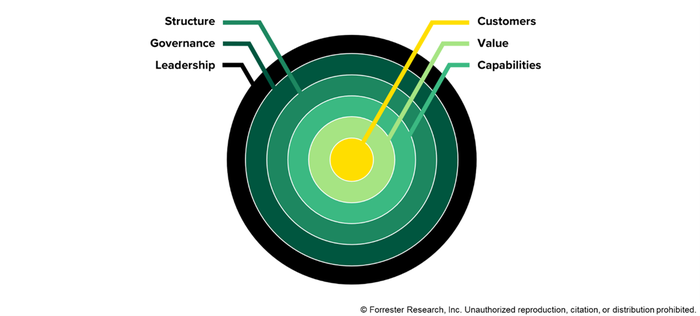Can Your IT Operating Model Keep Up With Cloud?Can Your IT Operating Model Keep Up With Cloud?
Forrester describes its Cloud Operating Model Framework for revamping cloud operations.
April 30, 2024

Cloud has driven enterprise IT transformation with speed and scale that was simply impossible with data centers alone. But operating models haven't always kept up — and the mismatch means that old operating models impede the optimization of cloud IT. Even mature cloud organizations with $100M in cloud spend per year face disconnected strategies with no clear connection between their core IT operations teams, agile/DevOps strategies, and their cloud platform teams. These old school operating models have become an obstacle. It's long overdue to bring these strategies together addressing the scale cloud needs, the speed of agile/DevOps, and the faults of classic queue-based tickets in a shared services organization.
Why are IT models so disconnected?
Historically, there is logic to this rigid and hierarchical approach to IT operations. Resources were limited by the amount of capital investment in a data center and had to be doled out in a prescribed manner. Self-service was anathema as capacity had to be carefully planned and solutions architects rationed compute and memory for each application, often based on speculation rather than a clear idea of what was actually needed.
Cloud upends that approach by allowing IT shops to more dynamically allocate compute resource and capacity to different users or groups throughout the organization. Self-service IT resources is no longer a chaos-generating and costly proposition, but the optimal way for IT ops to enable developers and their collaborators in the business. Cost control, compliance, and security remain constraints — but services can be provisioned and applications deployed at a dramatically faster pace. To handle this, companies created a separate group to handle this exception.
In some leading organizations, agile proceeded cloud efforts. Cloud gave them the technology to further scale/enable this reality. Since cloud serves many masters, agile/DevOps often remains somewhat isolated from cloud operations groups or is inconsistently engaged.
And no, IT operations doesn't — and shouldn't — fade away just because developers and business users access the cloud console and spin up services. On the contrary, IT ops becomes central to driving value throughout the organization as teams spend less time on the nitty gritty of IT infrastructure and more on enablement.
This challenge is the focus of a new report, Design Your Cloud Operating Model, by me and Gordon Barnett. It draws upon Gordon's research on the high-performance operating model for IT. The result is Forrester's Cloud Operating Model Framework, which acts as a blueprint for any organization.

The model asks you to explore six layers of the high-performance operating model with a cloud lens that shapes certain portions of your operating model and IT capabilities more than others. Like with any strong operating model, it starts with customers (and stakeholders). Next comes value. Capabilities come at the next level as cloud allows a reset of IT workflows to enable outcomes — a marked contrast to the old shared services model, where inelastic IT resources limited the scope to accommodate internal customers' needs. Structure and governance come next in this model, with leadership at the outermost circle. Our model walks you through each of these decisions – calling out the key decisions that are specific to cloud along the way.
Review your cloud operating model today while remembering that continuous improvement is essential for success.
Forrester clients can reach out to [email protected] to discuss how to adapt the model to revamp cloud operations.
This article originally appeared on Forrester's Featured Blogs.
About the Author
You May Also Like








.jpg?width=700&auto=webp&quality=80&disable=upscale)
